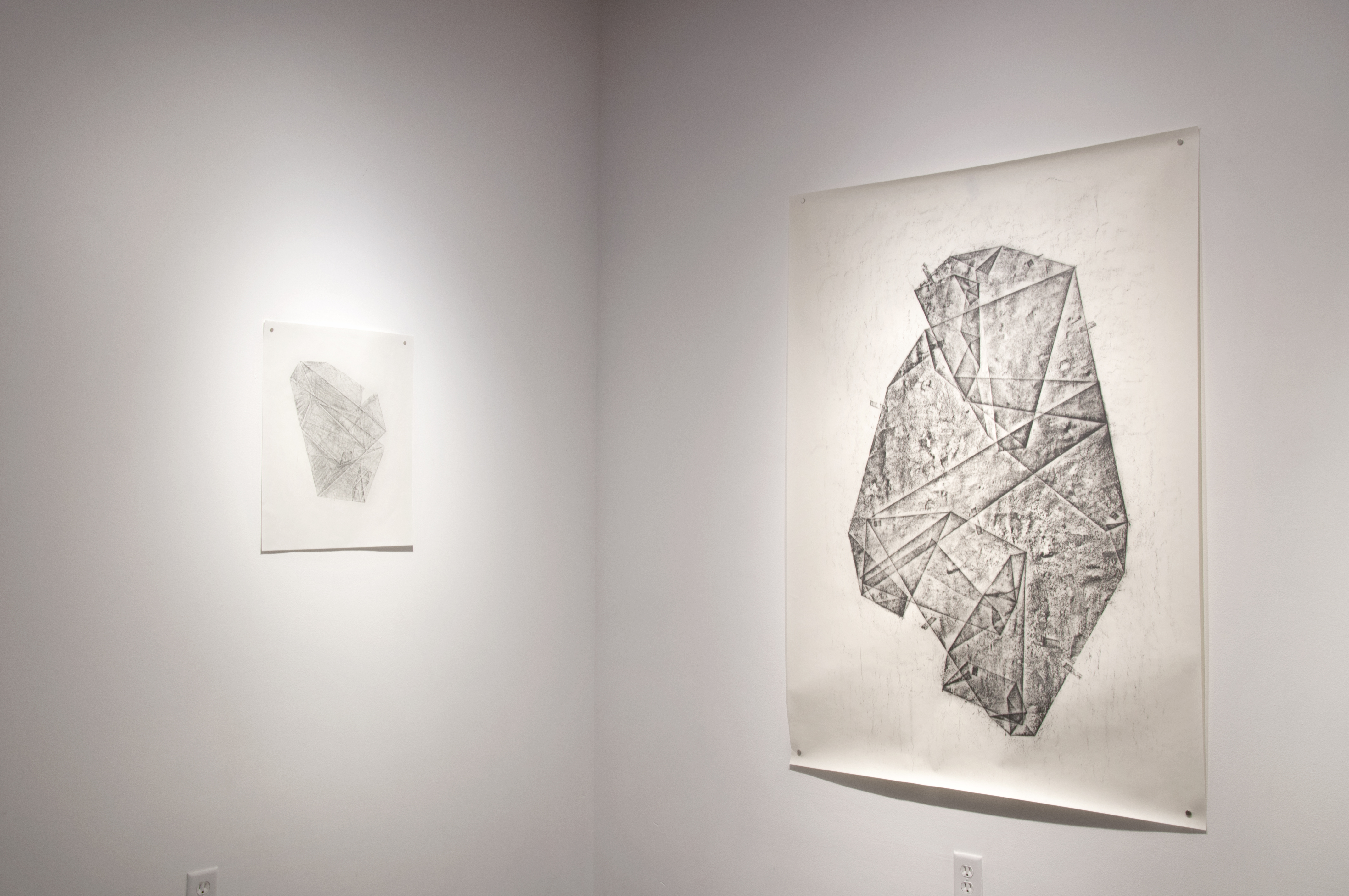rubbings, 2017-2019

A pearl, a fossil, or a scar all share a quality of embeddedness that points to the moment of its creation, a moment in the past. These rubbings mark and map themselves, as landscape can mark a language. As the actions of a body act on itself over time: the settling of aging bones, a violinist’s callus, a swimmer’s shoulders. As a log cabin sinks into the earth over the decades. As another kind of index, rubbings have an almost photographic quality. They almost make the
paper seem to disappear, as an x-ray reveals what can’t be seen by the naked eye. These drawings exist at the point where touch meets sight.
Like traditional “women’s work,” rubbing is an anonymous labor, a manual process hidden in plain sight. It is an authorless gesture. The surface asserts itself more than the hand of the artist. This kind of illusionism is independent of draughtsmanship. The image-making begins with the paper and the hand, not with a mark. Although a fold is indeed a mark: a structure, a pleat, a hem, a doubling.
In Spanish, doblar means both to fold and to double. It is this idea of multiplication that fascinates me. This body of work deals with the relationship between materiality and image – the latter is formed by the former. Yet the image itself so often multiplies outward, divorced from its material cause, in our screen-dominated world. Doblar also means “to dub,” as in a translated voiceover in a movie. Translation is another means of mediation, a transformation that can be generative. Something is lost, something else gained.